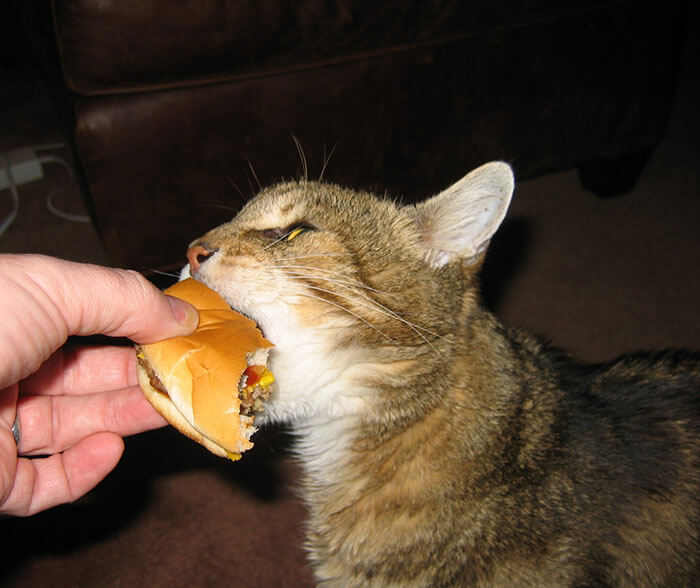Norwegian Forest Cat: History, Traits, & Care Guide
The Norwegian Forest Cat, often called the “skogkatt” in its native Norway, is a captivating breed with a history steeped in myth and legend. Known for its lush double coat, bushy tail, and keen climbing abilities, this cat is not just a pretty face—it’s a breed that has evolved to withstand the harsh climates of Scandinavia. Renowned for its gentle temperament and affectionate nature, the Norwegian Forest Cat makes an excellent companion, balancing independence with a strong bond to its human family.
In this in-depth exploration, we’ll delve into everything that makes this breed unique, from its fascinating evolutionary history to its behavior, diet, and role in human culture. Whether you’re a potential owner or simply a feline enthusiast, join us as we uncover the rich world of the Norwegian Forest Cat.
Contents
Scientific Classification
- Kingdom: Animalia
- Phylum: Chordata
- Class: Mammalia
- Order: Carnivora
- Family: Felidae
- Genus: Felis
- Species: Felis catus
- Breed: Norwegian Forest Cat
Physical Characteristics

The Norwegian Forest Cat is known for its striking appearance and robust build. These cats have a muscular body with long legs and a bushy tail that aids their balance and warmth. Their defining feature is their thick double coat, consisting of a dense underlayer and a water-resistant outer layer, helping them survive Scandinavia’s cold, harsh climates. The coat comes in various colors and patterns, including black, white, tabby, and tortoiseshell.
Their heads are triangular with high cheekbones, and they have almond-shaped eyes, which can be green, gold, or copper, often depending on the coat color. Their ears are medium to large, tufted, and positioned high on the head, adding to their wild, lynx-like appearance. Males can weigh between 13 to 22 pounds, while females are generally smaller, ranging from 9 to 13 pounds.
Habitat
Originally from the forests of Norway, the Norwegian Forest Cat is adapted to cold woodland environments. They are well-suited to survive in rugged terrains with plenty of trees for climbing and shelter. While domesticated, these cats thrive in environments where they can explore outdoors or in homes with ample vertical spaces to climb and perch.
Behavior

Norwegian Forest Cats are known for their calm, gentle, and independent nature. Despite their wild ancestry, they are highly affectionate with their human companions, though they tend to bond more closely with one or two people in a household. They are excellent climbers and enjoy perching on high places, often observing their surroundings. Norwegian Forest Cats are intelligent and playful, making them an excellent fit for families with children or other pets.
Though relatively quiet compared to other breeds, they are known for their soft chirps and purrs when interacting with their favorite humans. These cats are also highly adaptable and can live comfortably indoors as long as they are provided ample stimulation and climbing opportunities.
Diet
Norwegian Forest Cats would have been carnivorous hunters in the wild, preying on small rodents, birds, and other small creatures. As domesticated pets, their diet typically consists of high-quality commercial cat food rich in animal protein. It’s essential to provide them with a well-balanced diet that mimics their natural hunting diet, with the option of wet or dry food. Occasional raw meat treats can also help stimulate their instincts.
Reproduction
The Norwegian Forest Cat reaches sexual maturity at around 6 to 12 months. Female cats have an average gestation period of 63 to 67 days, after which they give birth to litters, typically 3 to 6 kittens. These cats are attentive mothers, nurturing their young until they are weaned around 8 to 10 weeks.
Kittens of this breed increase, but their thick fur and physical maturity can take up to five years to fully develop. This long maturation period is partly due to their large size and the complexity of their double coat.
Predators
In the wild, Norwegian Forest Cats were likely preyed upon by larger predators such as wolves and birds of prey. However, as a domesticated breed, they face fewer natural predators. Their size and agility make them formidable in defending themselves against more minor threats. Domesticated Norwegian Forest Cats, however, may still face dangers from cars, aggressive dogs, and larger wildlife if allowed to roam outdoors.
Conservation Status
The Norwegian Forest Cat is not considered endangered. They have been bred extensively, both in Norway and around the world. Their popularity as pets ensures a stable population, though their wild ancestors once faced challenges due to deforestation and urbanization. Breeders continue to preserve the characteristics of the breed through responsible breeding practices.
Interesting Facts
- The Norwegian Forest Cat is known as “skogkatt” in Norway, meaning “forest cat.”
- They were once believed to be the companions of the Norse goddess Freyja, associated with love, fertility, and beauty.
- Their water-resistant coats make them excellent anglers and swimmers, a trait rare in domestic cats.
- Norwegian Forest Cats were nearly extinct during World War II, but dedicated breeders helped restore the population.
Evolutionary History
The Norwegian Forest Cat is thought to have descended from domestic cats brought to Norway by Vikings around 1,000 years ago. These cats likely interbred with local wildcats, leading to the development of the breed’s distinctive characteristics. Over time, the breed adapted to the harsh Scandinavian environment, evolving their thick coats and climbing prowess to survive in snowy forests.
In the early 20th century, efforts were made to recognize and preserve the breed formally. By the 1970s, the Norwegian Forest Cat was registered as an official breed, gaining recognition across Europe and later in the United States.
Relationship with Humans
Norwegian Forest Cats have long been companions to humans, revered for their hunting skills and loyalty. They were often kept on farms to control rodent populations, and their independent nature made them perfect for living in rural, frequently isolated conditions.
Today, they are beloved pets around the world. They enjoy the company of humans but retain their independent streak, making them suitable for families that appreciate an affectionate yet self-sufficient cat. Their gentle, social nature also makes them excellent therapy animals, bringing comfort and companionship to those in need.
Conclusion
The Norwegian Forest Cat is a remarkable breed with a rich history and impressive adaptations to its cold, forested homeland. From its majestic appearance to its calm yet adventurous personality, this breed has become a beloved companion for cat enthusiasts worldwide. Its long-standing relationship with humans and its resilience and beauty ensures that the Norwegian Forest Cat will continue to be a cherished breed for generations.
- Golden Retriever Pros and Cons: What Every Pet Parent Should Know - 15 September 2025
- Cane Corso Dog Breed: Health, Care, and Lifespan - 14 September 2025
- Catahoula Leopard Dogs: Description, Temperament, Lifespan, & Facts - 21 July 2025







